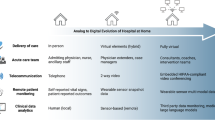Abstract
Background:
Hypothermia is a common problem in preterm infants immediately following delivery.
Local problem:
The rate of admission hypothermia in our neonatal intensive care unit (NICU) was above the rate of comparable NICUs in the Vermont Oxford Network.
Methods:
To reduce the rate of preterm admission hypothermia, a quality improvement (QI) project was implemented, utilizing the plan-do-study-act (PDSA) methodology. A guideline for delivery room thermoregulation management in <35-week infants at the University of Virginia was created and put into practice by a multidisciplinary team.
Interventions:
Clinical practice changes in the guideline included: increasing operating room temperatures, obtaining a 10-min axillary temperature, using an exothermic mattress for all infants <35 weeks, and using a polyethylene wrap for infants <32 weeks.
Results:
The baseline rate of hypothermia (<36.5 °CC) was 63%. Three PDSA cycles data were completed on 168 consecutive preterm births. The post-implementation rate of hypothermia (<36.5 °C) was reduced to 30% (P<0.001). The incidence of moderate hypothermia (< 36 °C) was reduced from a baseline of 29% to a rate of 9% (P<0.001).
Conclusion:
Use of a multidisciplinary guideline to increase preterm NICU admission temperatures resulted in a decrease in hypothermic infants.
This is a preview of subscription content, access via your institution
Access options
Subscribe to this journal
Receive 12 print issues and online access
$259.00 per year
only $21.58 per issue
Buy this article
- Purchase on Springer Link
- Instant access to full article PDF
Prices may be subject to local taxes which are calculated during checkout



Similar content being viewed by others
References
Miller SS, Lee HC, Gould JB . Hypothermia in very low birth weight infants: distribution, risk factors and outcomes. J Perinatol 2011; 31 (Suppl 1 (S1): S49–S56.
Ringer SA . Core concepts: thermoregulation in the newborn part I: basic mechanisms. Neoreviews 2013; 14 (4): e161–e167.
Ringer SA . Core concepts: thermoregulation in the newborn, part II: prevention of aberrant body temperature. Neoreviews 2013; 14 (5): e221–e226.
Laptook AR, Salhab W, Bhaskar B . Admission temperature of low birth weight infants: predictors and associated morbidities. Pediatrics 2007; 119 (3): e643–e649.
de Almeida MFB, Guinsburg R, Sancho GA, Rosa IRM, Lamy ZC, Martinez FE et al. Hypothermia and early neonatal mortality in preterm infants. J Pediatr 2014; 164 (2): 271–5.e1.
Lyu Y, Shah PS, Ye XY, Warre R, Piedboeuf B, Deshpandey A et al. Association between admission temperature and mortality and major morbidity in preterm infants born at fewer than 33 weeks’ gestation. JAMA Pediatr 2015; 169 (4): e150277.
Zaichkin J, Kattwinkel J, McGowan J . American Heart Association, American Academy of Pediatrics Textbook of Neonatal Resuscitation,6th edn. American Academy of Pediatrics: Elk Grove Village, IL,2011.
Jia Y-S, Lin Z-L, Lv H, Li Y-M, Green R, Lin J . Effect of delivery room temperature on the admission temperature of premature infants: a randomized controlled trial. J Perinatol 2013; 33 (4): 264–267.
McCall EM, Alderdice F, Halliday HL, Jenkins JG, Vohra S . Interventions to prevent hypothermia at birth in preterm and/or low birthweight infants. Cochrane database Syst Rev 2010; 17 (3): CD004210.
Leadford AE, Warren JB, Manasyan A, Chomba E, Salas AA, Schelonka R et al. Plastic bags for prevention of hypothermia in preterm and low birth weight infants. Pediatrics 2013; 132 (1): e128–e134.
Chawla S, Amaram A, Gopal SP, Natarajan G . Safety and efficacy of Trans-warmer mattress for preterm neonates: results of a randomized controlled trial. J Perinatol 2011; 31 (12): 780–784.
Russo A, McCready M, Torres L, Theuriere C, Venturini S, Spaiǵht M et al. Reducing hypothermia in preterm infants following delivery. Pediatrics 2014; 133 (4): e1055–e1062.
McCarthy LK, Molloy EJ, Twomey AR, Murphy JFA, O’Donnell CPF . A randomized trial of exothermic mattresses for preterm newborns in polyethylene bags. Pediatrics 2013; 132 (1): e135–e141.
DeMauro SB, Douglas E, Karp K, Schmidt B, Patel J, Kronberger A et al. Improving delivery room management for very preterm infants. Pediatrics 2013; 132 (4): e1018–e1025.
Manani M, Jegatheesan P, DeSandre G, Song D, Showalter L, Govindaswami B . Elimination of admission hypothermia in preterm very low-birth-weight infants by standardization of delivery room management. Perm J 2013; 17 (3): 8–13.
Weiner GM, Zaichkin J, Kattwinkel J,American Academy of Pediatrics, American Heart AssociationTextbook of neonatal resuscitation, 7th Edition.American Academy of Pediatrics: Elk Grove Village, IL, 2016
Author information
Authors and Affiliations
Corresponding author
Ethics declarations
Competing interests
The authors declare no conflict of interest.
Rights and permissions
About this article
Cite this article
Harer, M., Vergales, B., Cady, T. et al. Implementation of a multidisciplinary guideline improves preterm infant admission temperatures. J Perinatol 37, 1242–1247 (2017). https://doi.org/10.1038/jp.2017.112
Received:
Revised:
Accepted:
Published:
Issue Date:
DOI: https://doi.org/10.1038/jp.2017.112



